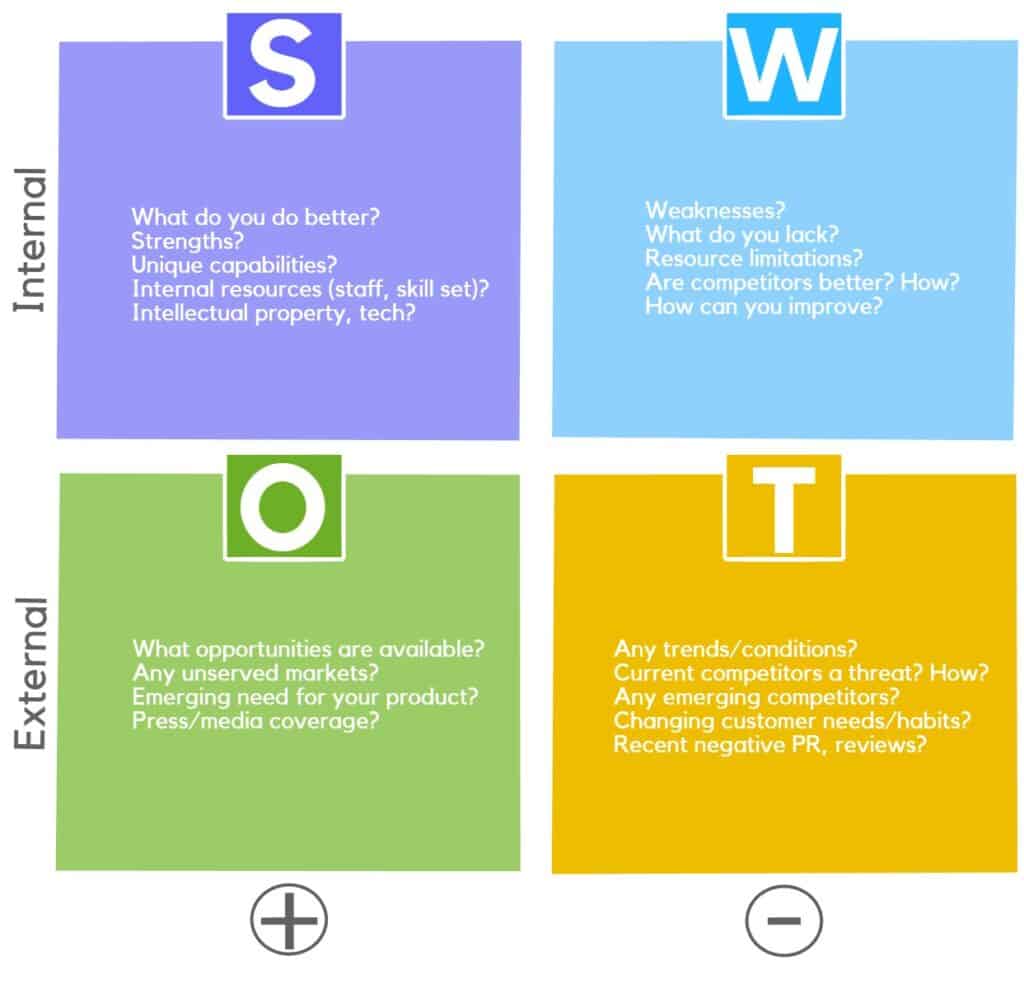Change is a time of uncertainty and needs to be handled accordingly. A small organizational change can have a big impact, whether related to a process or job roles. How changes are managed can lead to very different outcomes, so what happens if you don’t make use of change management practices?
Failing to use a change management process during a transition in your organization can lead to a drop in productivity, drop in employee morale, exceeding costs, lost opportunities, and delays in the completion of projects. Ignoring change management can cost organizations money, time, and people.
As a manager in a growing company, you must be aware of the importance of change management and the potential consequences of not using it correctly.
It is critical to ensuring that your company can adapt to new challenges and opportunities quickly and efficiently. Without it, your company may find itself lagging behind its competitors who are able to implement changes more effectively.
Additionally, your employees may become resistant to necessary changes or even rebel against them entirely.
Proper change management can help avoid these outcomes by ensuring that changes are introduced smoothly and with minimal disruption.
There are two distinct sides to any change: One deals with infrastructure, processes, and required resources. The other deals with people.
People are what facilitate change, and so the process needs to be appropriately managed by business leaders.
Consequences of Not Using Change Management
According to a Mckinsey study, the ROI from a project where effective change management was implemented jumped to 143%, while it remained a mere 35% where it was poor or not present.
This single statistic tells you how effective change management can be. It can revolutionize how you implement changes within an organization and directly impact your revenue.
Let’s look at what happens when you completely ignore the significance of having a change management strategy in place within your organization:
Delayed Projects
Part of this process is proper planning that allows for setting milestones and involving employees and stakeholders to inform them of their role during the process. If this step is ignored, employees are unlikely to be on one page in delivering on the milestones.
Employees will also show more resistance and not understand the importance of the change. Extra time will be spent on making amendments and adopting. This leads to our next consequence, i.e., overrun project costs.
Overrun Costs
Efficiency is crucial in saving costs. When projects are delayed and employees show resistance, more time, training, and resources are required to succeed. Even then, without a proper plan for implementing change, projects have little chance of succeeding without costs running high.
Low Morale
People are bound to resist change because it makes them feel insecure and anxious. Even the smallest changes in an organization can face resistance from teams and employees. Effective change management ensures that different kinds of resistance are met with the appropriate response and strategy to move the process forward.
When these strategies are not applied, employee morale tends to sink due to the overall negativity of the work environment and a feeling of being overworked.

Appointing change agents who are early adopters of change and advocate its benefits helps most in these situations.
An Environment of Failure
Who likes to fail at projects? No one. However, a vast majority of projects fail due to no proper change management or strategy in place. Once an organization fails at a significant task, the feeling of failure doesn’t leave that quickly.
Employee morale and faith in the organization and its roles take a nosedive. This can drastically impact future project success rates, and it will be years before your organization can recover from this.
Lost Opportunity
Change management principles and strategies are designed to enable you to get the best outcomes from a project. When you fail to acknowledge the importance of these strategies, you never really get to see the full potential of the results you could have got from your initiative.
If there is no adoption amongst employees, there will be no increase in revenues and efficiency. All this is a lost opportunity for your business.
Now that we’ve looked at what happens when you don’t see the importance of implementing a change management strategy, let’s explore the fallbacks of poorly implementing the process.
Fallbacks of Poorly Implementing Change Management
So you have a change management plan in place and are on your way to implementing it. Apart from having a sound plan, success in this domain depends on how well and thoroughly you’re implementing the process.
Poorly managed transitions can lead to delayed adoption of change, leading to issues like budget exceeding, delayed projects, and ultimately, project failure.
Here are some costs of change-makers not implementing their plan at every level:
Project Level
As the name suggests, these changes are implemented at a specific project level that can deal with different technologies, job roles, and organizational processes. These can be initiated due to performance reviews, a need for gaining a competitive edge, or a need arising from customer or vendor feedback.
These kinds of changes can be formally implemented with the help of change-makers or initiated informally but still impact how employees do their work.
Poorly managed change at this level can mean delayed projects, overrun costs, reworks, missed milestones, and lost opportunities.
Significant risks include abandoning the project due to bad planning and resource allocation. Effective change management caters to all these risks and costs. It ensures that the full potential of a project is realized and outcomes are most favorable for the organization and its employees.
Organizational Level
Failures at this level can lead to an impact on the entire organization and costs that are incredibly high. Morale can be impacted by repeatedly failing at projects, and valuable employees can leave the organization. All of these factors cost the organization money and time.
The major cons are the loss of employees and efficiency at the organizational level. This ultimately impacts vendors and customers too. The overall brand image also takes a plunge, which can drive the organization toward failing as a whole.
When change makers don’t follow through on their plan and implement it properly, the organization wastes precious resources and can never see the expected results from a change management process. Moreover, the organization can lose precious time that can be spent on other projects and process changes.
Why Do Change Management Processes Fail?
Organizational changes are inevitable, and they happen over time. Change management is a journey with many moving parts, which means a lot can go wrong if it isn’t handled with laser-sharp focus, good management, strict timelines, and supporting tools.
Let’s look at why change management can fail so you can avoid making these common mistakes and get the maximum benefit from your initiative.
Lack of Strategy
Planning is one of the first principles of successful change management. Change managers should know the reason behind the change, the people required for transition, and the steps needed to conclude the growth.
Your team will not be properly equipped to handle the change without a proper plan. You need to ensure a plan is in place and all necessary resources are mobilized for implementation.
A sound place to begin with, is doing a SWOT analysis of the team and your organization to determine whether they can survive the change successfully or not.

Miscalculating Scope and Scale
A good change manager is skilled at calculating the resources and time required to succeed. It is natural for the project scope to exceed the initial assessments. Many projects fail because insufficient time, money, or resources are available to execute them successfully.
Use a good project management tool to do the assessment of the resources you will need and what points you will need them at. In this case, it is always better to be proactive rather than reactive to ensure any last-minute delays in milestone delivery.
Neglecting Stakeholders
You can quickly identify the prominent executives and stakeholders who will implement a change as they are often management initiatives.
However, the biggest mistake of most change-makers is neglecting all the stakeholders affected by the transition.
Change managers should identify all the roles and people affected by the process and develop strategies to involve them at every stage of the process. This will help reduce the fear and the employee resistance to change. Also see: The Fear of Change: Why Is It So Hard For People And Companies To Accept Change?
Conducting bilateral meetings and ensuring feedback is taken early can be a critical factor in ensuring the success of your initiative. Creating a focus group made up of individual employees from around the business can provide a valuable insight into how employees are reacting.
Lack of Communication
Within Organizational change management communication is the key to success Your plans, initiatives, milestones, and role assignments will hold no power unless they are communicated effectively.
Poor change management forgets to constantly communicate the need and importance of change. Changes are bound to happen and are necessary for the growth of an organization. However, it is natural for employees to resist them and feel anxious because of them.
As a change maker, you must advocate for the process. You need to involve the managers and explain their importance in achieving success and how the change will impact them and the organization.
Low Buy-in Levels
The people side of change management is the most difficult to handle. Everyone from a low-level intern to higher management needs to be on board with the change.
A successful change initiative is heavily dependent on buy-in from all the stakeholders.
Senior leadership needs to be on board with making decisions that will support the initiative; the mid and entry-level resources are required to ensure implementation.
Your plan for getting buy-in at every level should include:
| Employment Level | Strategy to get Buy-in |
| Senior Management | Share objectives and expected outcomes and how the organization will benefit from the change |
| Team Leads | Share how the plan can alter their team’s day-to-day activities and address their concerns |
| Individual Contributors | Communicate the value they bring and the payoff they will get as a result of successful implementation |
| Cross departmental resources | Explain how their work will be impacted by the change and share the benefits they incur as a result. |
Lack of Proper Tools
We live in a technology-driven era, and as such, project and change management tools are designed to help speed along the process and ensure proper documentation.
Even something as simple as using a document or Excel sheet to map the KPIs and the progress can do wonders as opposed to using no tools at all.
Check to see what existing tools your company has in place, as well as Microsoft Office do you have access to Microsoft Teams? Slack? Microsoft Visio or SketchWow for process mapping?
Tools aren’t just digital in nature, do you have the faciliaties to hold meetings and focus groups? To conduct presentations? Do you have a training team?
Effective change leaders build up a company ‘toolbox’ that gives them options throughout the process.
Lack of Perseverance
The journey of change management is a long one. Changes aren’t implemented in a day. They take time and require endurance and perseverance from your resources and teams to succeed.
There will be many setbacks and changes in direction along the way. To ensure that teams don’t lose sight of the end goal, you must be transparent about the timelines. If the project takes months, then you should communicate just that.
Sharing shorter expected timelines will deliberately harm your employees’ trust in you and also negatively impact their morale in the long run.
Lack of Vision
Change management works best when there is a clear end goal. This end goal or vision is what will help you get buy-in from all the stakeholders. No one will invest their time and resources in working towards unclear objectives.
During the planning stage, you must develop a clear image of what you want to achieve from this initiative, what needs to be done to achieve it, and who is required to achieve it.
Senior managers must agree to the vision to ensure a unified message and direction can be communicated to employees.
Frequently Asked Questions
Why is change management necessary?
Change is important for a company’s overall growth and advancement. Changes are implemented to improve things and adapt to new technologies and best practices. Change management allows for better adaptation and acceptance amongst employees and ensures higher success rates for change projects.
What is change’s impact on an organization?
Effective change management brings many benefits to an organization, including increased growth and revenue, boosted productivity and efficiency, increased employee morale, etc.
What is the most important aspect of change management?
Communication is the most crucial of all principles. No plans or strategies are effective unless they are properly communicated to the stakeholders and those implementing the change.
Final Thoughts
Effective change management can be a challenge for any organization. Failure to implement it comes with high costs, so organizational change-makers must understand the roadblocks they can face and plan proactively. We hope this article helps you see the importance of never ignoring the principles of change management during times of transition.
Managers who don’t use change management effectively put their organizations at risk for a variety of negative outcomes. Those who take the time to learn about and implement change management best practices can help ensure that their companies experience positive results from organizational changes.
Sources





